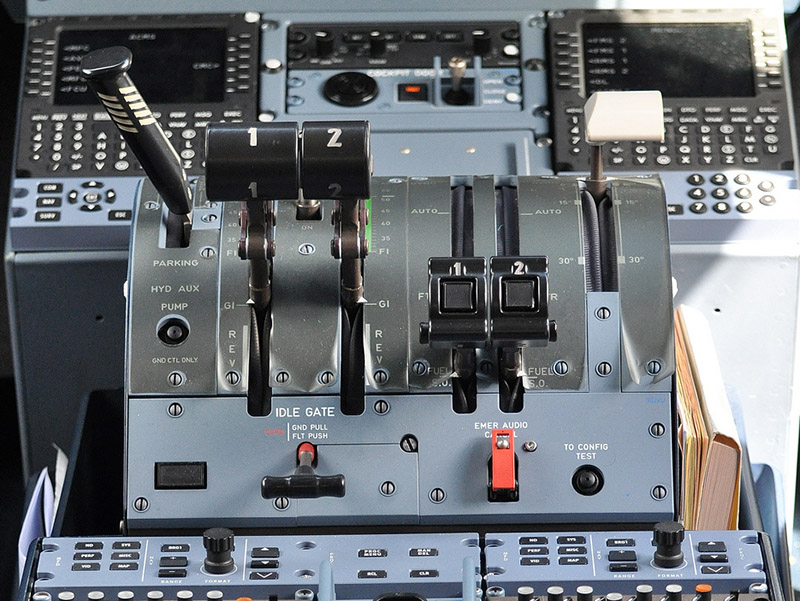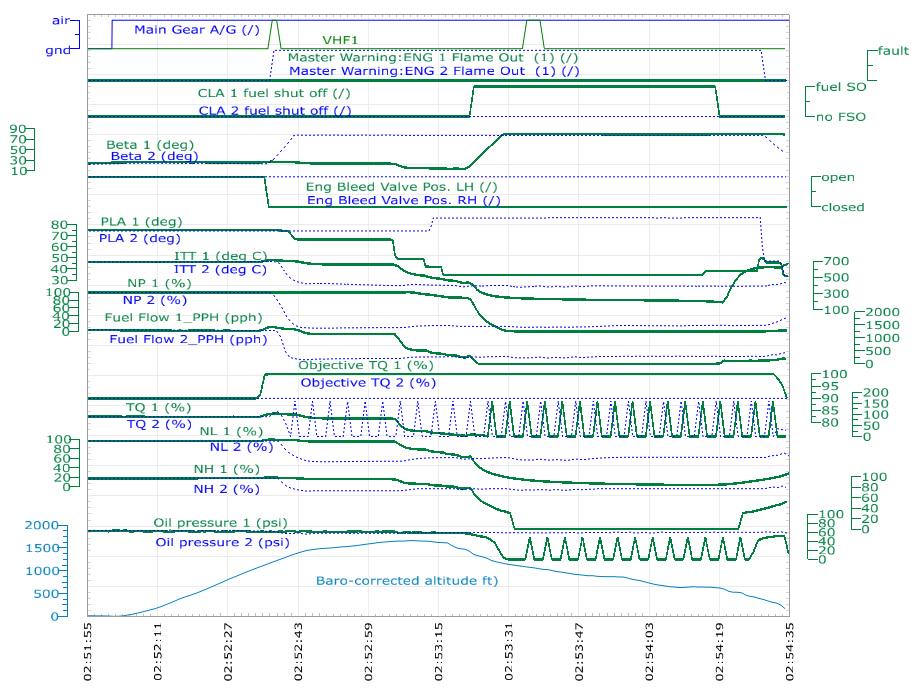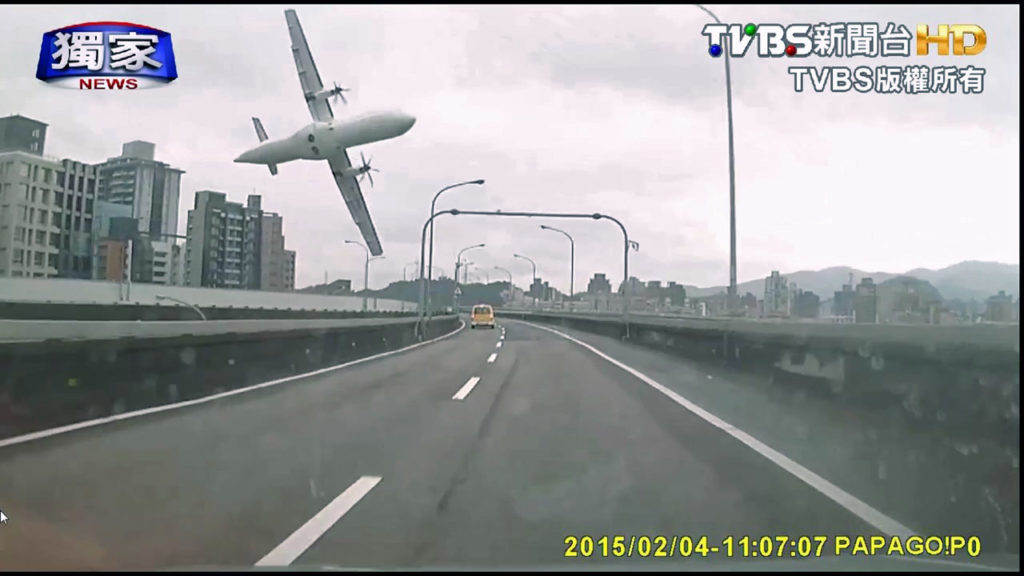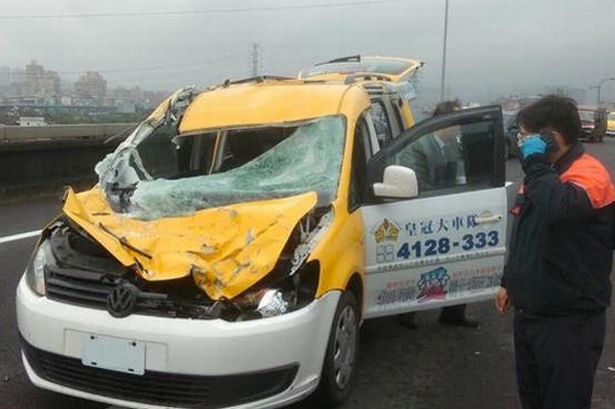Flight Data Recorder chart from the TransAsia flight that crashed in Taipei:
I’ll amend this later if I’m reading that chart incorrectly, but it seems to indicate that they initially had a master warning that engine two flamed out. Engine two auto-feathered, meaning it automatically turned the propeller blades parallel to the airflow to reduce drag. The crew mistakenly powered back engine one (PLA is Power Lever Angle) to 35%, just above Flight Idle, and then shut its fuel off (CLA – Condition Lever Angle set to FSO). As they lost altitude, they realized their mistake and tried to restart engine one – at first, failing to restore its fuel supply – but they were down to 500 feet AGL by the time they restored the fuel and it was too late to recover. It hit the bridge sixteen seconds later.
If true, this would be much the same as the British Midland flight 92 air crash in 1989.
The driver whose taxi was hit, seen exiting the vehicle in the second picture below, did spot the aircraft coming. The instant he applied his brakes is shown below. His quick reaction and that one-tenth of a second or so of slight slowdown almost certainly saved his life and that of his his passenger. Had they been just one foot farther forward, there would have been a different ending for them.
Video here.

ATR 72-600 engine controls: In the middle, Power Levers (PLA on the chart) on the left and Control Levers (CLA) on the right





[…] up on my February post on the TransAsia crash in Taipei, this is from part 4 of the interim report just released. […]